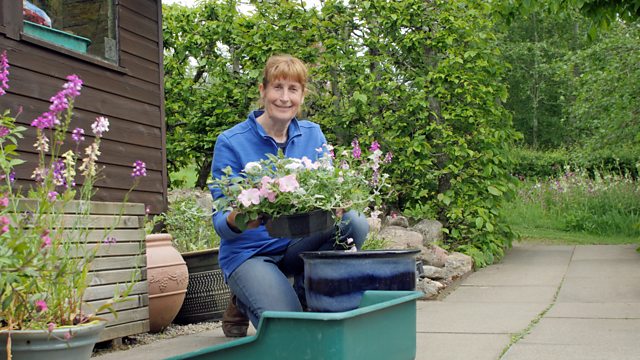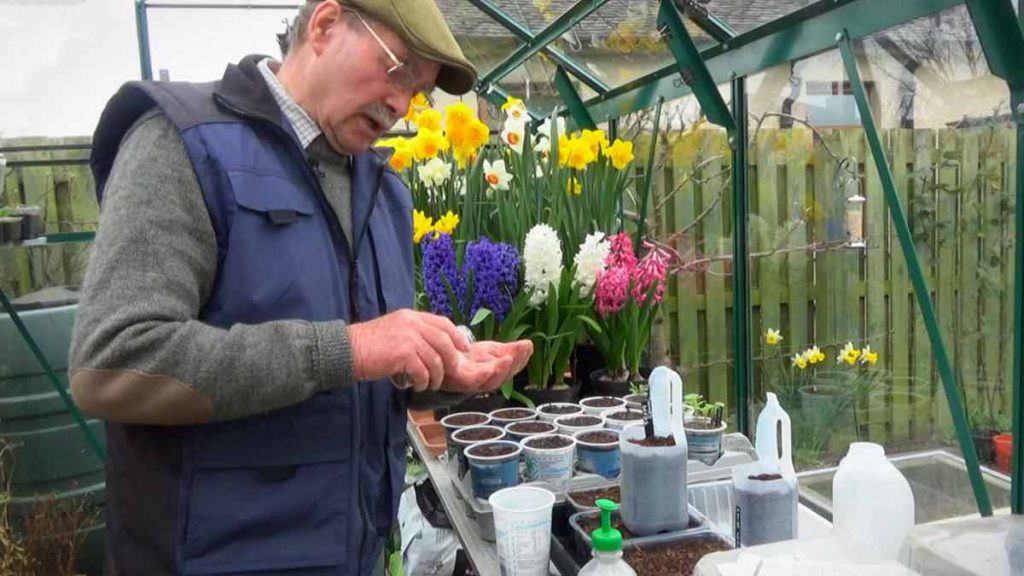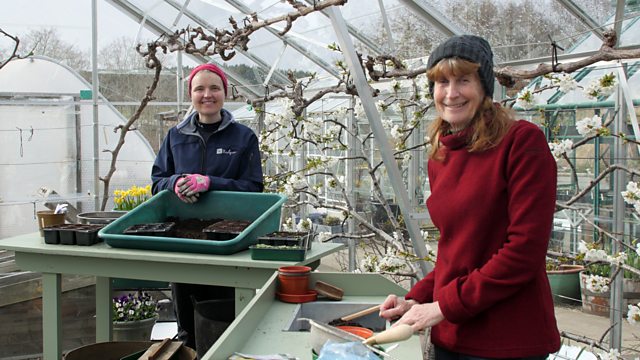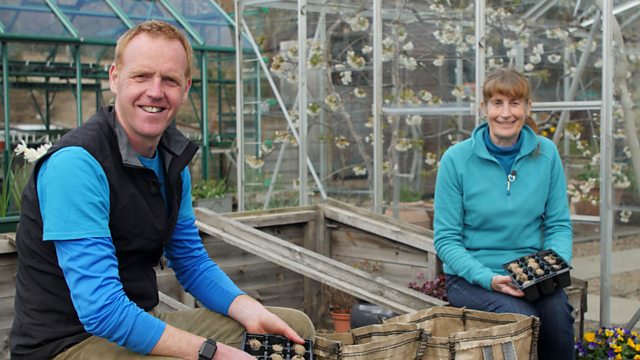The Beechgrove Garden 2021 episode 13: Brian and Carole are being neighbourly in Beechgrove as they swap stories over the fence between Brian’s Alpine garden and Carole’s seaside garden.
Meanwhile, we find out what difference two months makes to one of the most glorious gardens in Scotland as we catch up with Sophie McKilligan in her new role as gardener at Culzean Castle, in Ayrshire. Calum Clunie is at his Leven allotment as the countdown to the shows that he has entered is ticking.
The Beechgrove Garden 2021 episode 13
Alpines
Alpines are small and highly collectable plants, producing exquisite little flowers in a range of vibrant hues. As they come from mountainous regions, many are very hardy. They’re easy to grow too, as long as you give them sharply draining compost. They thrive in containers, where a small collection can create a cheery display all year round.
Alpines are compact plants that usually produce lots of tiny jewel-like flowers in vibrant colours. Alpines encompass a range of plants from bulbs, shrubs and herbaceous perennials. Most form cushion-like mounds, or slowly spreading carpets. A popular way to grow them is to combine several different plants together as a collection, among gravel or rocks to mimic their natural habitats on mountain slopes.
Most alpines like dry, sunny conditions, so are happy in containers, rock gardens, gravel gardens and raised beds. They prefer a mulch of grit or gravel on the soil surface, so their foliage doesn’t rest on damp ground. Established plants fare well in cold, exposed sites, or during short spells of drought. Alpines won’t survive in consistently damp conditions, so give them free-draining soil or compost. If growing in a container, make sure there are plenty of drainage holes, and in wet winters move the container into the lee of a wall to avoid excessive winter rainfall.
Cabbages
Easy to grow, nutritious and tasty, cabbages are veg plot favourites. There are many different types, in various shapes, sizes and colours, for harvesting at all times of the year. You can use them raw in salads or coleslaw, and as ingredients in many delicious dishes, from hearty soups to traditional bubble and squeak.
Cabbages can be sown either directly in the ground outside or in modular trays (and left outdoors). If you only want a few cabbages or have limited space, it’s easiest to sow in trays (one seed per module), then transplant outdoors later. Although cabbages do best in open ground, you could grow one or two in a large, deep container, but they aren’t suitable for growing bags.
Take care not to grow cabbages in the spot where you grew them (or other brassicas) the previous year. Traditionally, cabbages are sown into a ‘seed bed’ – a site away from the main vegetable plot – then transplanted later in the season. This is because sowing them at their final spacing in your main plot would take up a lot of room early in the season, when you could be using it for fast-maturing crops such as lettuces.
Still, if you have plenty of space, it’s fine to sow straight into your main plot at their final spacing – 30–45cm (12–18in) apart, depending on the variety (check individual seed packets).




